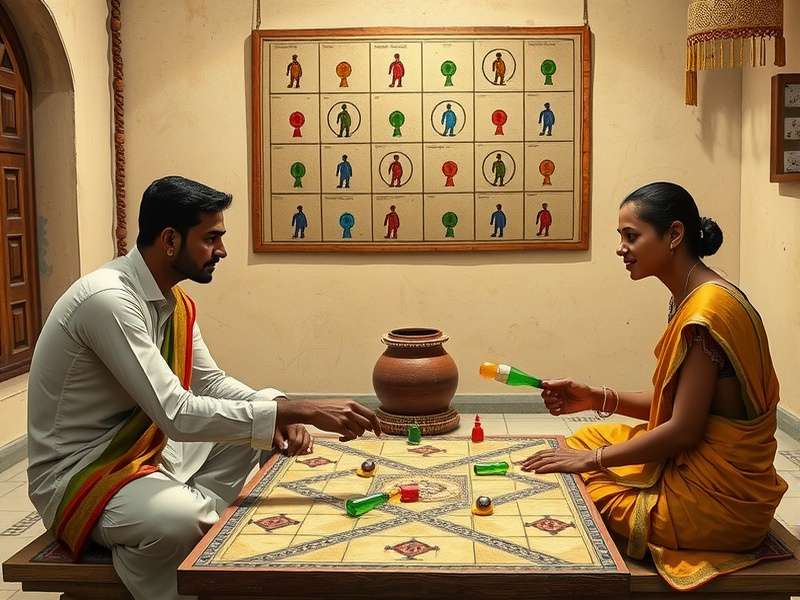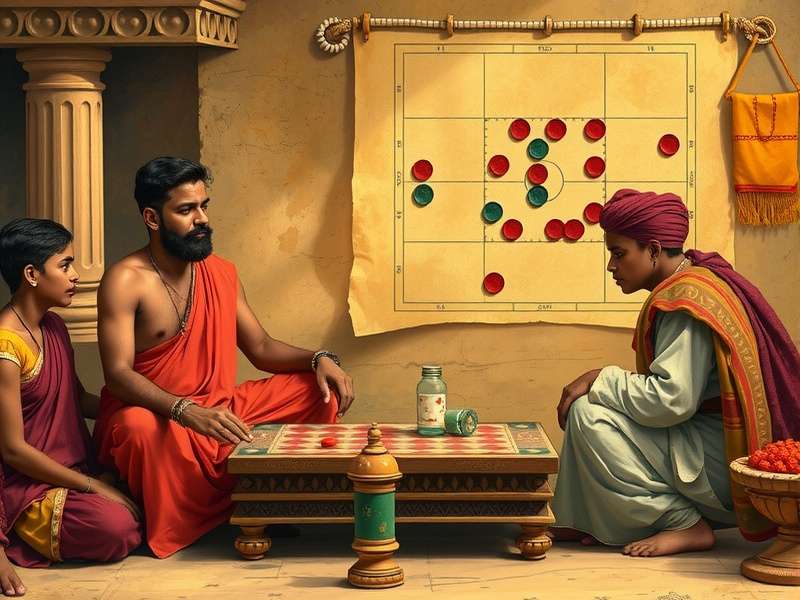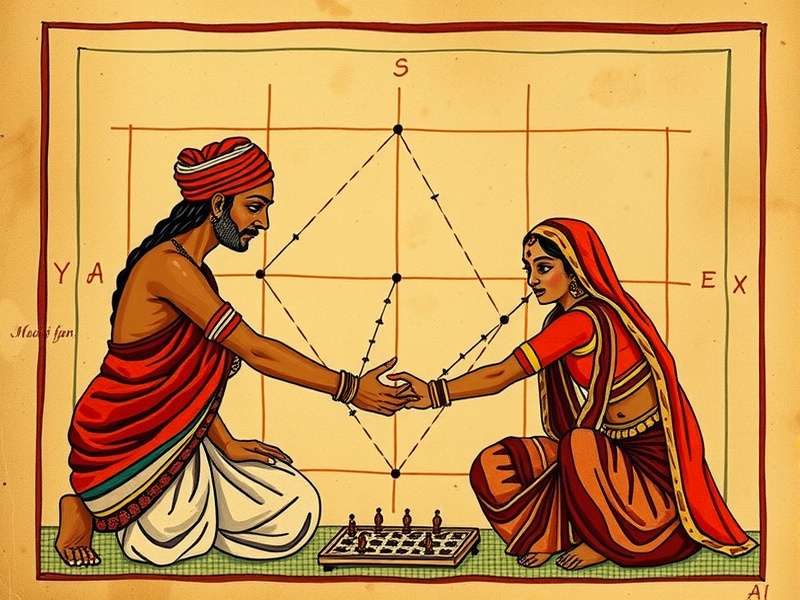Table of Contents
Overview of Kurta Duel Dominator 🎮
TheKurta Duel Dominatorrepresents one of India's most sophisticated traditional strategy games, blending elements of tactical warfare, resource management, and psychological gameplay. This ancient pastime has been played across the Indian subcontinent for centuries, with its origins tracing back to royal courts and strategic military training exercises.
🌟 Key Insight:Unlike Western strategy games that often focus on direct confrontation,Kurta Duel Dominatoremphasizes indirect control, territorial influence, and strategic patience - reflecting deeper philosophical principles found in Indian culture.
At its core, the game involves two players competing for dominance over a specially designed board using distinctive pieces that each possess unique movement capabilities. The name "Kurta" derives from the Sanskrit word for "circle" or "cycle," representing the cyclical nature of strategy and counter-strategy that defines gameplay.
Strategic Depth
Combines elements of chess-like tactics with unique Indian strategic principles, creating a game of immense complexity.
Cultural Heritage
Preserves ancient Indian strategic thinking and philosophical approaches to conflict resolution.
Historical Origins & Evolution 📜
The earliest references to games resemblingKurta Duel Dominatorappear in Sanskrit texts dating back to the 6th century CE, where it was known as "Chakravyuh" - named after the legendary military formation described in the Mahabharata. These early versions were primarily used as training tools for military commanders and royal advisors.

During the Gupta Empire (4th-6th centuries CE), the game evolved significantly, incorporating mathematical principles and strategic concepts from Indian philosophy. It was during this period that the standardized 8x8 board with special marked positions became established, along with the distinctive piece movements that characterize the modernKurta Duel Dominator.
The game spread throughout Southeast Asia via trade routes, with local variations developing in different regions. However, the core strategic principles remained consistent, focusing on the concept of "Dharma Yuddha" - righteous warfare that emphasizes strategic superiority over brute force.
By the Mughal era,Kurta Duel Dominatorhad become a favorite pastime among nobility, with elaborate sets crafted from precious materials. The game's popularity declined during British colonial rule but experienced a significant revival following India's independence as part of cultural preservation efforts.
Complete Rules & Gameplay 📋
Understanding the rules ofKurta Duel Dominatoris essential for both beginners and experienced players looking to refine their strategy. The game combines simple basic rules with deep strategic possibilities.
Basic Setup
The game is played on an 8x8 square board with specially marked "power positions" at the four center squares and the four corner squares. Each player controls 16 pieces of different types, distinguished by color (traditionally red and blue).
Piece Movements
Each of the six piece types inKurta Duel Dominatorhas unique movement capabilities:
Rajah (King)
Moves one square in any direction. The most important piece - if captured, the game ends.
Mantri (Minister)
Moves diagonally any number of squares. The primary attacking piece.
Gaja (Elephant)
Moves horizontally or vertically any number of squares. Strong defensive piece.
Ashva (Horse)
Moves in L-shape (2 squares in one direction, then 1 perpendicular). Unique jumping ability.
Special Rules
Kurta Duel Dominatorfeatures several unique gameplay mechanics not found in other strategy games:
🔄 Rotation Rule:After every five moves, players must rotate one of their peripheral pieces to a new position, preventing stagnant defensive formations and encouraging dynamic play.
The "Dominance" scoring system rewards players for controlling key board positions, with bonus points for maintaining control of the center power positions for consecutive turns. This adds a territorial dimension to the game beyond simple piece capture.
Winning Strategies & Techniques 🏆
MasteringKurta Duel Dominatorrequires understanding both fundamental tactics and advanced strategic concepts. Successful players balance aggressive piece development with careful position control.

Opening Principles
The initial moves inKurta Duel Dominatorset the stage for the entire game. Expert players follow several key principles:
- Center Control:Establish presence in the central power positions early
- Piece Development:Activate all pieces efficiently without overextending
- Rajah Safety:Ensure the king piece is protected but not completely immobilized
- Flexible Formation:Maintain ability to adapt to opponent's strategy
Mid-Game Tactics
Once pieces are developed, the game transitions to complex tactical maneuvers:
🎯 Pro Tip:The "Lotus Formation" - arranging pieces in concentric defensive circles while maintaining attacking threats - is a classic mid-game strategy inKurta Duel Dominatorthat has proven effective for centuries.
Successful players learn to recognize common tactical patterns like the "Tiger's Pounce" (a sudden attacking combination) and the "Cobra's Coil" (a gradual positional squeeze). Understanding when to exchange pieces and when to maintain tension is crucial.
Endgame Techniques
As pieces are exchanged, the game simplifies into technical endgames where precise calculation dominates:
Key endgame principles include activating the Rajah piece (which becomes stronger with fewer pieces on the board), creating passed pieces that threaten promotion, and understanding the fundamental winning positions for different piece combinations.
Required Equipment & Setup 🎲
TraditionalKurta Duel Dominatorsets feature distinctive design elements that reflect Indian artistic traditions while serving practical gameplay functions.
The Game Board
The standard board measures approximately 18x18 inches and is traditionally made of rosewood or sheesham wood. The squares alternate between light and dark shades, with the eight special power positions marked with traditional Indian motifs - typically lotus flowers at the corners and chakras at the center.
Game Pieces
Each player's 16 pieces are traditionally crafted from materials that contrast with the opponent's set. Common materials include:
Luxury Sets
Carved from ivory, silver, or precious stones for royal and ceremonial use
Traditional Sets
Made from sandalwood, rosewood, or brass for regular gameplay
Modern Sets
Constructed from durable plastics or compressed wood for mass production
Each piece type features distinctive carving that identifies its movement capabilities, with the Rajah typically being the most ornate piece in the set.
Regional Variations 🌍
AsKurta Duel Dominatorspread throughout India and neighboring regions, local variations developed that adapted the game to different cultural contexts while maintaining the core strategic concepts.
North Indian Style
Characterized by more aggressive opening strategies and emphasis on rapid piece development. The Rajah piece has slightly expanded movement capabilities in some variations.
South Indian Style
Focuses on positional play and long-term strategic planning. Features additional restrictions on piece movement that create more complex middlegame positions.
Eastern Variations
Incorporates elements of chance through dice rolls that determine which pieces can be moved each turn, adding an additional layer of probability management to the game.
🌏 Cultural Adaptation:The Tibetan variation ofKurta Duel Dominatorincorporates Buddhist philosophical principles, with special rules that reward players for creating symmetrical board positions representing balance and harmony.
Despite these variations, international tournaments typically use the standardized rules established by the All India Kurta Duel Dominator Federation, which maintains the traditional gameplay while accommodating modern competitive requirements.
Cultural Significance & Impact 🕌
Kurta Duel Dominatoroccupies a unique position in Indian cultural heritage, representing not just entertainment but also philosophical concepts, strategic thinking, and social interaction.

Philosophical Dimensions
The game embodies several key concepts from Indian philosophy:
- Dharma (Duty):Each piece has specific responsibilities and movement patterns
- Karma (Action):Every move creates consequences that must be managed
- Maya (Illusion):The ability to create deceptive board situations
- Moksha (Liberation):The successful conclusion of the game
Social Context
Historically,Kurta Duel Dominatorserved multiple social functions beyond mere recreation:
In royal courts, the game was used to assess strategic thinking among potential military commanders and advisors. In educational settings, it taught mathematical concepts and logical reasoning. In social contexts, it provided a structured way for people from different backgrounds to interact.
The game frequently appears in Indian literature and folklore, often as a metaphor for larger life struggles or strategic dilemmas faced by characters. Several classic Sanskrit plays feature pivotal scenes where characters playKurta Duel Dominatorwhile discussing important decisions.
Modern Revival & Competitions ⚡
After a period of decline during the 19th and early 20th centuries,Kurta Duel Dominatorhas experienced a significant revival in recent decades, driven by cultural preservation efforts and growing interest in traditional games.
Competitive Scene
The modern competitive landscape forKurta Duel Dominatorincludes:
National Championships
Annual tournaments organized by the All India Kurta Duel Dominator Federation with participants from all states
International Competitions
Biennial world championship featuring players from over 20 countries where the game has established presence
Youth Programs
School and college tournaments designed to introduce younger generations to the game
Digital Platforms
Mobile apps and online platforms allowing global players to compete in Kurta Duel Dominator
Preservation Efforts
Several organizations work to preserve and promoteKurta Duel Dominatoras part of India's intangible cultural heritage:
The Ministry of Culture has included the game in its list of traditional sports deserving preservation support. Museums across India feature historicalKurta Duel Dominatorsets in their collections, and academic researchers study the game's historical development and cultural significance.
🚀 Future Outlook:With growing global interest in traditional strategy games and cultural heritage,Kurta Duel Dominatoris positioned for continued growth and international recognition in the coming years.
Modern competitive play has led to the development of new strategic theories and opening systems, while preserving the traditional core of the game. Professional players now studyKurta Duel Dominatortheory with the same seriousness as chess grandmasters, contributing to the evolution of this ancient game while honoring its rich heritage.